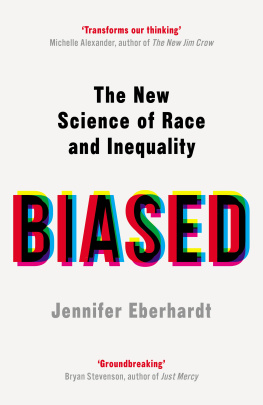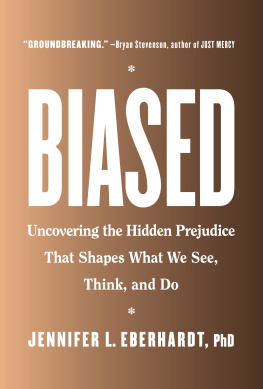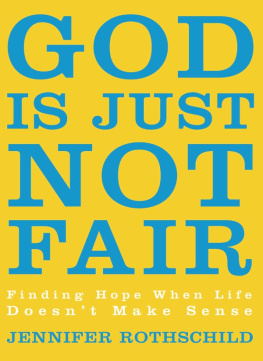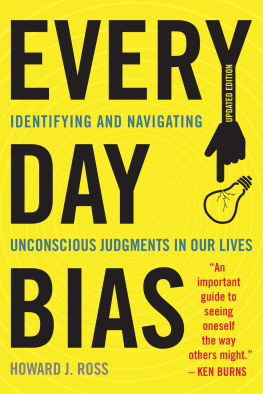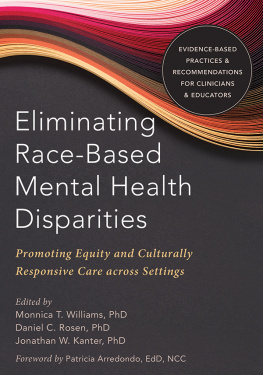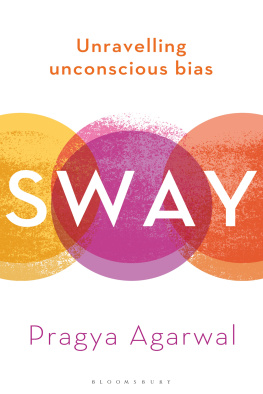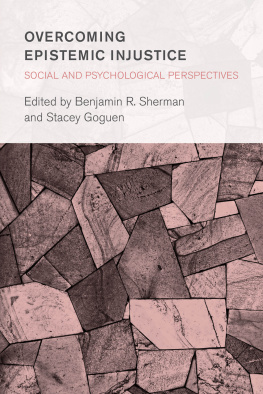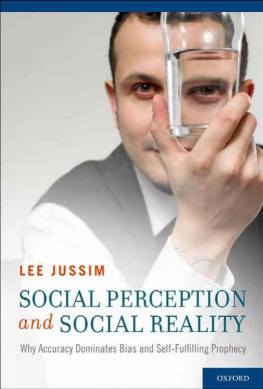
Conclusion
A gang shooting had just ravaged an Oakland neighborhood, leaving five people wounded and one nearly dead. I was at police headquarters, wrapping up a training on implicit bias, when an officer rushed into the auditorium, moving against the traffic filing out.
He was a tall, dark-skinned black man in full uniform, heading straight for the podium where I stood. When he reached me, I could tell he was agitated by the way he waved his hands as he began to speak. His voice was thick with anguish.
He described for me the chaos at the hospital where the victims of the mass shooting were being treated. Their friends and family members had descended on the emergency roomnoisy, angry, and afraid. They were wailing, sobbing, and screaming at the hospital staff. But when the officer waded in with questions that might help ID the gunmen, he was met with stony silence. Even in their grief, they wanted nothing to do with cops.
He wanted me to know, he said, what it was like to face victims and survivors of violent crime and be unable to make them whole. What it felt like to be rebuffed or insulted when you tried to help. What it meant to have to swim upstream all the time, trying to save lives weighed down by apathy and distrust.
He told me about the shots fired call that led him to a nine-year-old girl whod been sitting in her living room when a bullet tore through the wall of her house and left her paralyzed. There was nothing that could be done by the time the officer arrived.
He shared an encounter he had with a little black girl hed spotted on a crowded residential street, clutching a quilt stitched with a tribute to a murdered loved one: May He Rest in Peace. The officer began to speak to her, to express sympathy, but her elders warned her not to say a word. As if he were the one who had extinguished that life.
As he spoke, my eyes were drawn to a huge gash on the top of his glistening bald head. Fresh blood was still darkening and clotting around the stitches straining to hold his skin together.
And as he moved his hands through the air, describing all the shooting, stabbing, and killing going on, I noticed a much older wound. Part of his pinkie finger had been lopped off at the joint, leaving it dangling and out of sync with the movement of the fingers that remained intact. He was putting himself on the line every day. And the streets seemed to be taking him one piece at a time.
I could feel his frustration, but also his sense of mission. These police officers were mired in something bigger than any training could resolve. What they were experiencing on the streets was the fallout of racial disparities that reflect and generate biases that keep the cops and the community divided.
When people feel they are being treated unjustly, they arent likely to cooperate when it countswhen a call to police might help stop a crime or track a violent criminal. That lack of goodwill stalls investigations and lets crimes go unsolved, which sours the perceptions of police and community members alike.
Discussions about bias typically revolve around the gymnastics of our mental processing as we sort and judge and categorize. But the role of obvious racial disparities cant be overlooked. Disparate outcomes in the criminal justice systemwho gets stopped and searched, how suspects get charged, who sits in jail to await trial, and who winds up with a prison sentenceshape a mind-set that leads to biases in thought. When members of the broader public witness these disparities, many conclude that blacks are simply more crime prone and therefore deserve the negative treatment they receive. Disparities are the raw material from which we construct the narratives that justify the presence of inequality.
Those narratives spring to life to justify unequal treatment not just in the criminal justice arena but in our neighborhoods, schools, and workplaces. They explain why black families are steered away from white neighborhoods. They lead us to remain undisturbed as our schools continue to fail poor children in minority communities. They allow us to accept the shortage of women in the tech industry, as if that were the natural order of things.
The narratives that prop up inequality can help us to live less troubled in a troubling world. But they also narrow our vision and strand others on the wrong side of the opportunity divide. When our comfort comes at their expense, thats a social cost that ultimately shortchanges everyone.
So addressing bias is not just a personal choice; it is a social agenda, a moral stance. Every society has disadvantaged groups that are the targets of bias. When that disadvantaged status is blamed on those groups imagined faults, our incipient biases can feel warranted. Those biases will continue to be reproduced until we understand and challenge the disparities that fuel them. And the first step toward ending those disparities is to discard the assumption that they are inevitable.
Nowhere has this been made clearer to me than in Oakland, where the police department had a toxic relationship with the public for generations until it was ordered by the court to make sweeping changes. Through shifts in policies and practices over the last ten years, the department has not only improved police-community relations but also made it easier to curtail bias among officers.
It adjusted to its foot pursuit policy so that officers could no longer follow suspects as they ran into backyards or disappeared into blind alleys. Instead, officers were instructed to step back, slow down, call for backup, and think it through. The policy change not only has led to fewer civilians being shot but also has made cops safer. Injuries among officers dropped by 70 percent, and the number of officer-involved shootings fell dramatically, from an average of eight every year to a total of eight in the past five years, even while the arrest rate held steady and crime levels have fallen.
That small policy adjustment reduced the potential for bias to influence officers decision making. Because whether we are in the workplace, in the classroom, or on the streets, bias is most likely to have an impact on our thinking in high-stress situations where we feel we have limited options and are pressed to act quickly.
The Oakland Police Department was an early adopter of body-worn cameras, which are now used by most urban police departments and have been shown to influence officer behavior. Since the cameras were introduced in 2010, both citizen complaints and police use of force have declined sharply in Oakland. The cameras hold officers accountable, reminding them to raise the standard for their own behavior. And they empower communities by providing a visual record of the action in the field.
Oaklands use of technology goes beyond body cameras. Our research team from Stanford helped create new metrics for police stops and sophisticated algorithms for analyzing body-camera footage. The metrics push officers to rely on credible information rather than gut feelings during routine stops, because those hunches often fail to yield anything worth the conflict theyre liable to create. And the analysis of body-camera footage is allowing the department to dissect how community relations can be imperiled by even ostensibly benign officer conduct, such as the language they use during routine traffic stops.
Technology and data have helped the department move toward a more transparent form of precision policing. Officers on the streets in Oakland are being encouraged to think more deeply about why they are making some stops and not others. And the departments top executives are thinking about how to protect those officers from the conditions that make acting on bias most likely.
Next page
